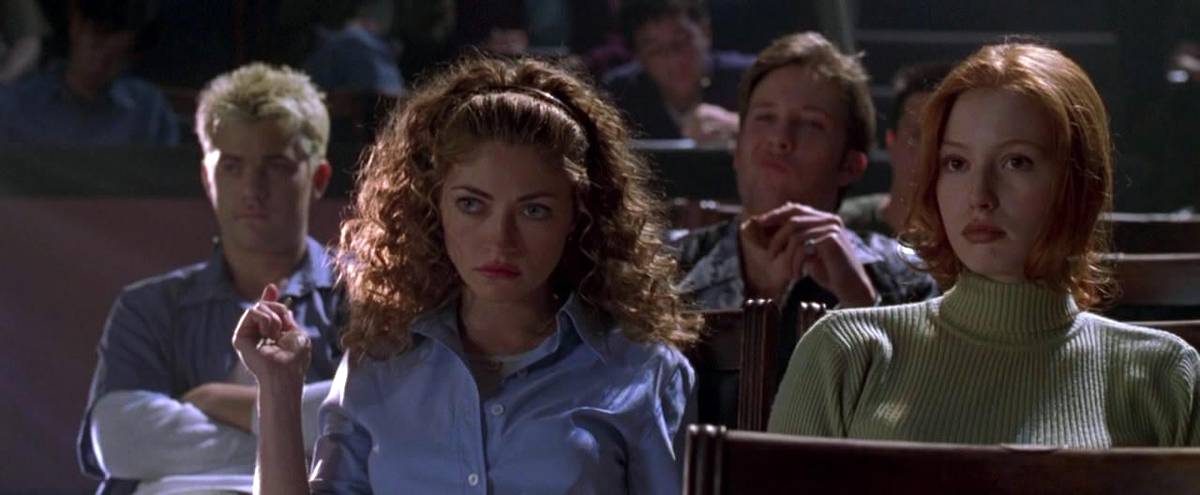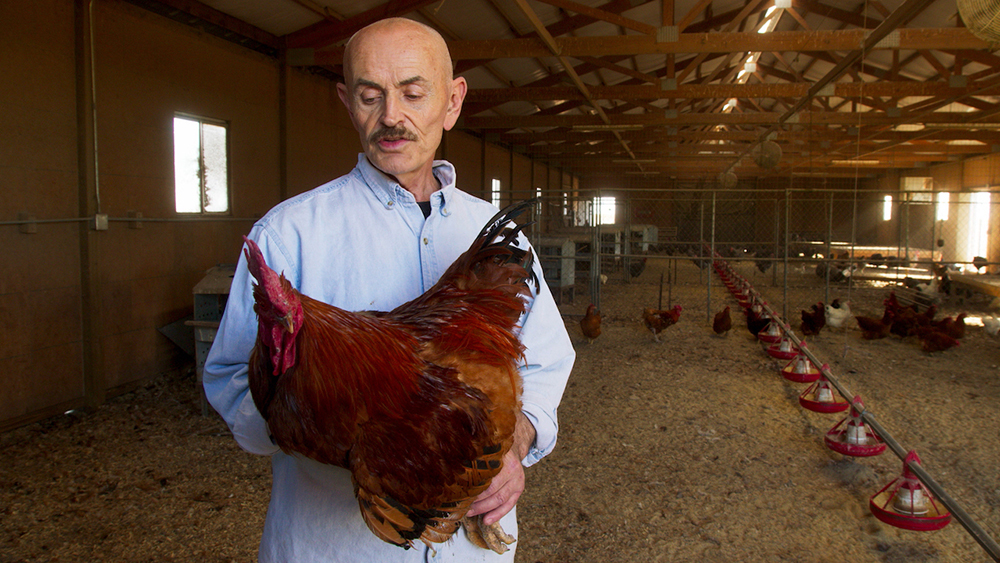When people think of classic vampire movies, two images instantly come to mind. The first is that of Count Orlok in the silent masterpiece Nosferatu. The second is Bela Lugosi’s brilliant performance as the title character in Universal Pictures’ definitive telling of Bram Stoker’s Dracula. The missing link between these two bloodsucking titans of cinema is the Danish film Vampyr.

Vampyr is about an occult phenomena researcher named Allan Grey (Julian West, the screen name of Nicolas de Gunzburg) whose studies take him to an inn near a tiny little French village called Courtempierre. His first night there, his sleep is interrupted by the intrusion of an old man (Maurice Schutz) who, after spouting some confusing rhetoric, leaves him with a package that is inscribed with a message that it should only be opened upon the old man’s death. Following a child’s cry for help that he hears, Allan wanders through the night and is treated to strange visions of dancing shadows and barking dogs. The village doctor (Jan Hieronimko) appears and tells Allan that there are no dogs nor children anywhere around the inn.

Confused, Allan stumbles into a park where he finds a chateau. The old man from the night before lives there with his daughters, Gisèlle (Rena Handel) and Léone (Sybille Schmitz). The daughters are sick, sporting ugly wounds on their necks and seeming to be badly in need of blood transfusions. When a shadowy gunman unceremoniously kills the old man, Allan opens the mysterious package, which turns out to be a vampire-hunting guide. As Allan works his way through the book, he begins to believe that the man’s daughters are being targeted by a demonic bloodsucker.

Vampyr was directed by Carl Theodor Dreyer (The Passion of Joan of Arc) from a script that he wrote with Christen Jul (John and Irene). The plot is based upon a few different stories by notorious vampire author Sheridan Le Fanu, whose work also inspired Blood and Roses, The Vampire Lovers, and even Let’s Scare Jessica to Death. Production was actually started in 1929, but the film’s release was pushed back to 1932 so that Universal’s Dracula could open up the vampire movie doors for it in Europe. Because of this, Vampyr feels like a much older movie than it actually is, even if its release was only held up for a couple of years.

In many ways, Vampyr feels like a silent movie that has been retrofitted for sound. Dialogue is sparse, with much of the exposition delivered via title cards or by showing the audience the pages from the vampire hunting manual that Allan is given (this also allowed for different language versions of the movie to be made by simply changing the overdubbed voices). Vampyr is a surreal, fantastical movie, both narratively and visually, showing an obvious German expressionist influence. It’s an experimental film, owing as much stylistically to Luis Buñuel as it does to F.W. Murnau, but Vampyr truly does bridge the gap between the silent abstract horror of Nosferatu and the subtle romantic spookiness of Dracula.

For a movie about vampires, Vampyr has surprisingly few bloodsuckers in it. Of course, vampires are a plot point, and a major one, but the vampires in the movie are kept in the shadows, allowing the humans to take the lead. At some points, it even seems as if the vampires aren’t even real, but simply figments of the imagination that stem from the paranoid minds of the humans. This is how Vampyr differs greatly from both Nosferatu and Dracula; the vampire in Vampyr is a secondary character, almost more of a story catalyst than anything else. While this robs the viewer of any exhilarating climactic showdown, Vampyr makes up for it with a crazily nightmarish third act that doesn’t disappoint, vampire duel or not.

The cinematography for Vampyr is credited to Rudolph Maté (The Pride of the Yankees, Foreign Correspondent), although Louis Née (Diabolique, …And God Created Woman) shot some of the film as well. The photography combines the harsh angles of German expressionist film with the high-contrast lighting of American film noir. The lack of spoken verbiage opens the film up to plenty of interesting dream-like camera tricks, things like double exposure ghost images and fun moving shadow shots. The most striking aspect of the photography was an accident, though; when Maté showed Dreyer an early segment that was blurry and washed out, the director decided that he liked the style, so the rest of the film was shot through a mesh sheet that was mounted a few feet from the camera to soften up the picture. The soft focus adds a stylistic touch to the film that is, in a word, distinct.

The lack of dialogue also leaves plenty of room for the film’s wonderful music, a score that comes courtesy of composer Wolfgang Zeller (Black Magic, Queen of Atlantis). Full of spooky, ominous strings, the soundtrack basically sounds like what it is: the score to a silent movie. The singing violins and booming basses both help tell the story and set up the scares. Although it’s a tight score, it still sounds live and energetic, almost as if there’s a live orchestra playing along with the movie. The score for Vampyr is forced to carry a lot of the load of the film, but luckily, it’s up for the task.

Because of its experimental format and its lack of a strong singular antagonist, Vampyr will never be thought of as a classic vampire movie. Honestly, it’s hardly a vampire movie at all. But it’s still an important movie in horror history, if only for its stunning imagery and its stirring score. For these reasons alone, it easily belongs in the same conversation as Nosferatu and Dracula.


